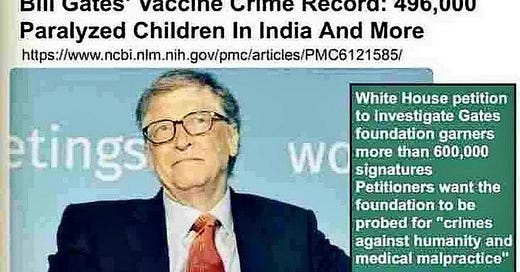
“In simple terms” summary of www.ncbi.nlm.nih.gov/pmc/articles/PMC6121585/
In simple terms, here's what the study says:
1. **Polio Situation in India:** India reported its last case of polio in 2011. Polio is a disease that can cause paralysis, but there are other causes of sudden paralysis that are not related to polio, known as non-polio acute flaccid paralysis (NPAFP).
2. **High NPAFP Rates:** In 2011, the rate of NPAFP in India was very high (13.35 cases per 100,000 people), much higher than the expected rate of 1-2 cases per 100,000 people.
3. **Pulse Polio Rounds:** To combat polio, India conducted mass vaccination campaigns called pulse polio rounds, where the oral polio vaccine (OPV) was given to children multiple times.
4. **Previous Study Findings:** A study from 2000 to 2010 found that higher rates of NPAFP were associated with more pulse polio rounds. The strongest link was seen when considering the number of doses given over the past four years.
5. **Causal Relationship:** Finding a link (or correlation) between more vaccine doses and higher NPAFP rates does not necessarily mean one caused the other. However, it raised questions about a possible connection.
6. **Recent Study Focus:** The current study looked at data up to 2017 to see if the NPAFP rates dropped when the number of pulse polio rounds was reduced after 2011.
7. **Study Results:** The study found that as the number of pulse polio rounds decreased from 2012 onward, the NPAFP rates also started to decrease. This trend was especially noticeable in the states of Uttar Pradesh (UP) and Bihar, which had the highest NPAFP rates.
8. **Strongest Correlation in UP and Bihar:** In these states, the strongest link between NPAFP rates and pulse polio rounds was found when considering the number of doses given over the previous five years.
9. **Conclusion and Suggestion:** The study suggests that reducing the number of pulse polio rounds might help lower the NPAFP rates. Since India has been free of polio for over six years, the researchers propose further reducing the number of pulse polio vaccination rounds to potentially decrease NPAFP rates even more.
In essence, the study indicates a potential link between the high rates of NPAFP and the intensive polio vaccination campaigns, and it suggests that with polio being eradicated in India, fewer vaccination rounds might help reduce NPAFP cases.


There is a strong link between "polio" and DDT. https://linlaz.substack.com/p/more-on-virus-fraud-the-history-of
The use of DDT (dichlorodiphenyltrichloroethane) is restricted but not entirely banned in some countries. Here are some countries that still permit the use of DDT:
INDIA: India continues to use DDT for malaria control in certain areas.
South Africa: DDT is used in specific regions for controlling malaria vectors.
Ethiopia: DDT is employed for indoor residual spraying to control malaria.
Uganda: Uganda uses DDT for malaria control in designated areas.
Mozambique: DDT is used for indoor residual spraying against malaria vectors.
So... India and Africa. There are no coincidences.